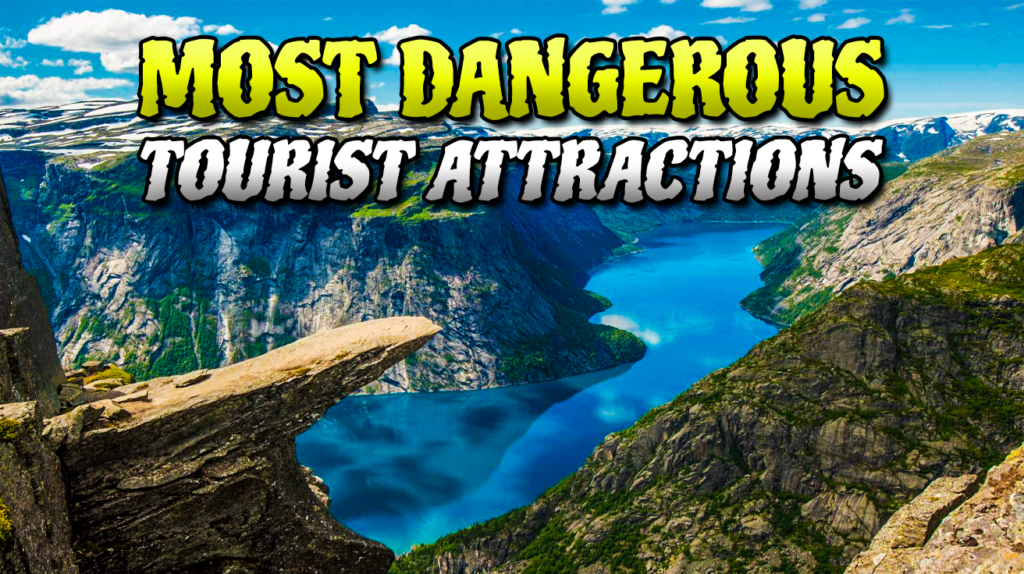
Standing at the edge of Bolivia’s “Death Road,” where the crumbling cliff drops 2,000 feet into a seemingly endless abyss, even seasoned travelers feel their hearts race. Every year, millions of thrill-seekers journey to the world’s most perilous destinations, drawn by an irresistible mix of natural wonders, ancient architecture, and the raw thrill of pushing personal boundaries. These legendary locations offer experiences that transform ordinary vacations into unforgettable adventures, yet they demand respect, preparation, and awareness from those who dare to visit. In this guide, we’ll take you through twenty of the planet’s most hazardous tourist spots, revealing their unique dangers, historical significance, and the essential safety measures that could make the difference between an epic story and a tragic headline.
22. Mount Huashan
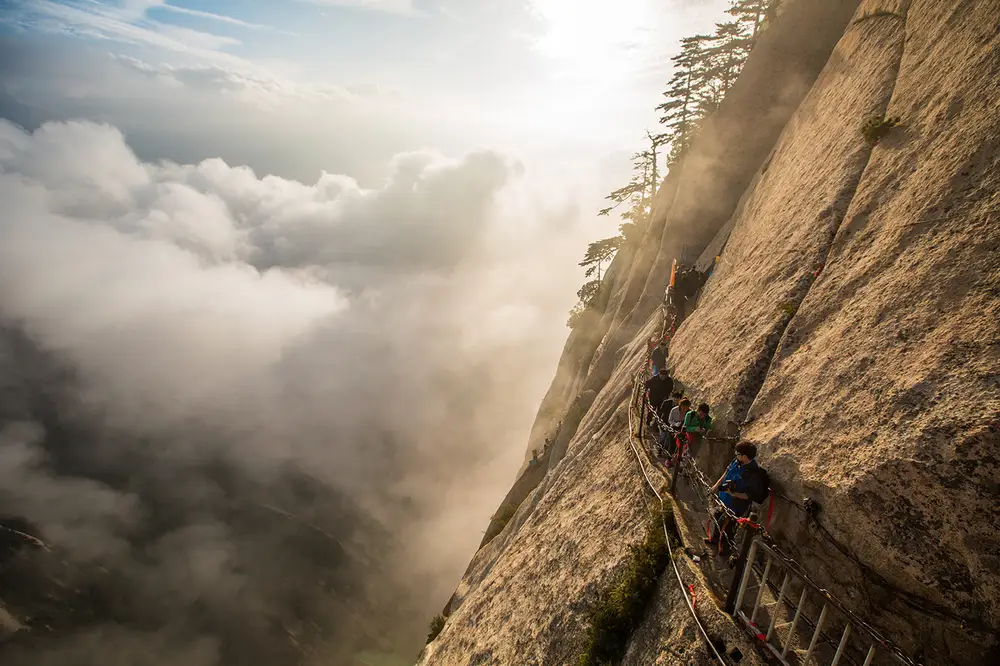
Mount Huashan hosts a “plank walk” consisting of wooden boards bolted into a sheer cliff face at 7,000 feet. While climbers wear safety harnesses, the narrow boards, extreme exposure, and physically demanding nature of the climb create serious risks. The mountain’s other trails feature steep staircases carved into vertical rock faces, often crowded with visitors during peak seasons.
21. Death Valley
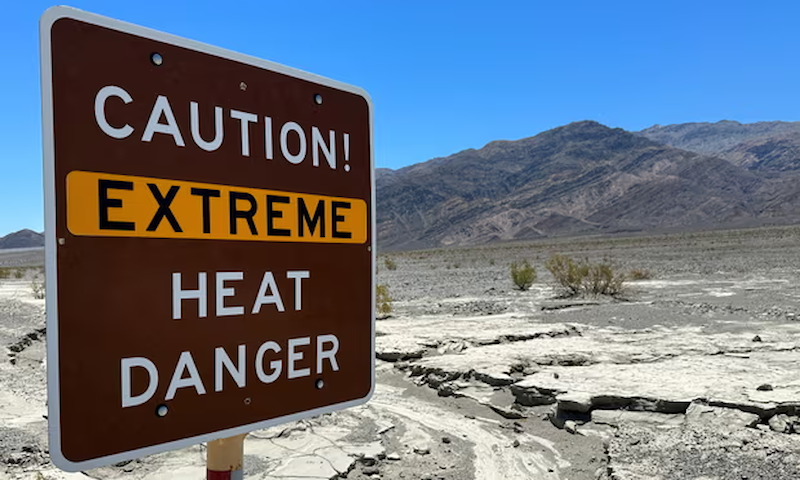
Death Valley subjects visitors to the highest recorded temperatures on Earth, reaching 134°F (57°C). The extreme heat, lack of water sources, and remote location creates life-threatening conditions for unprepared visitors. Flash floods, toxic water sources, and abandoned mine shafts add additional hazards throughout this vast desert landscape.
20. Hiking Trolltunga
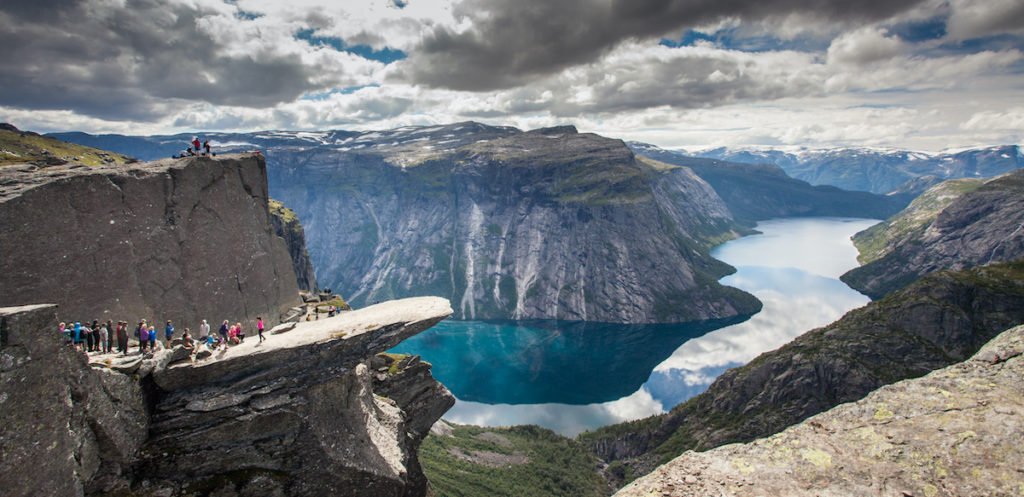
Trolltunga juts 2,300 feet above Lake Ringedalsvatnet in Norway without safety railings. The challenging 17-mile round-trip hike traverses high-altitude terrain with sudden weather changes and difficult trail conditions. Rescue operations take several hours to reach distressed hikers, while the iconic cliff outcrop presents serious risks from slippery conditions and high winds.
19. Devil’s Pool – Victoria Falls
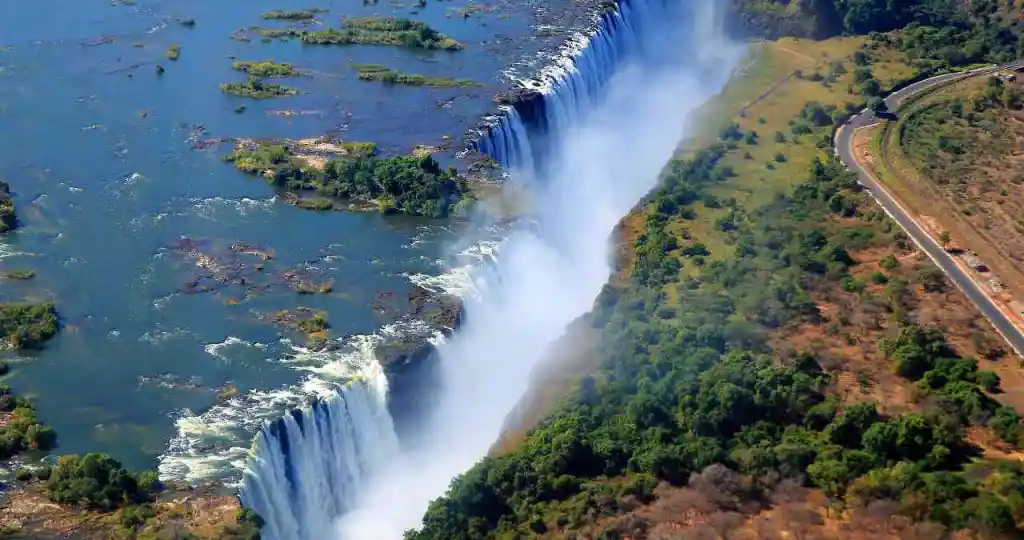
Devil’s Pool perches visitors on the edge of Victoria Falls’ 355-foot drop during low water season. This natural infinity pool forms at the precipice of the world’s largest waterfall, where swimmers can peer over the edge held back only by a subtle rock lip. Strong currents, slippery rocks, and the sheer drop make this Zambian attraction especially hazardous.
18. Stairway to Heaven
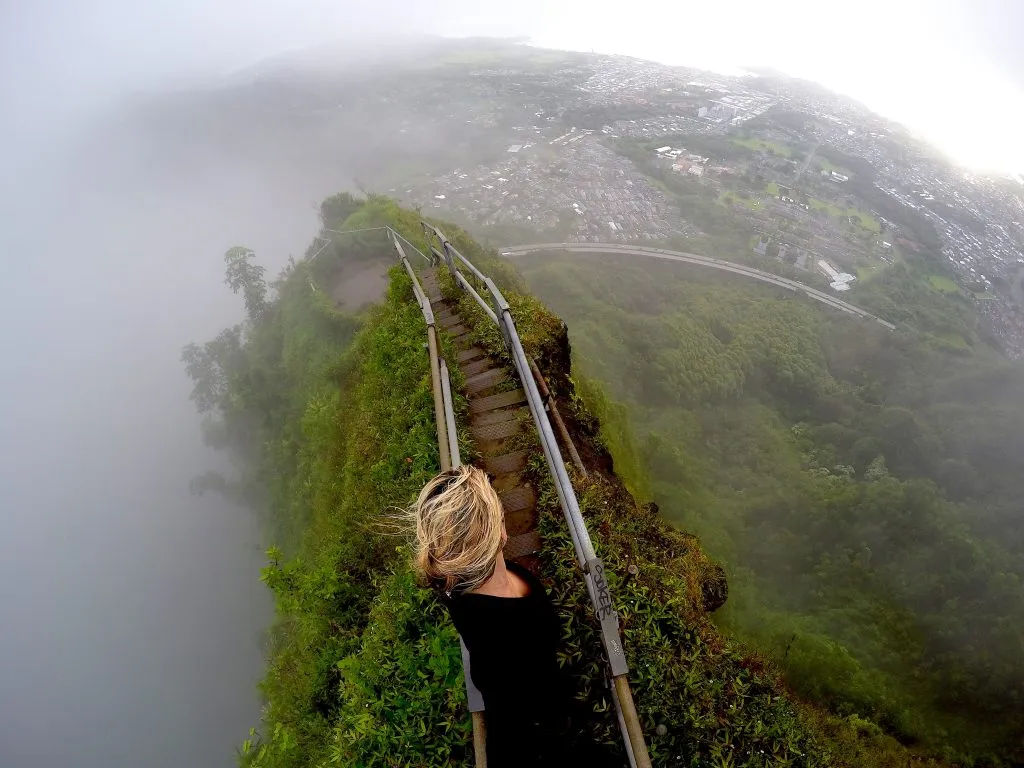
Stairway to Heaven ascends 2,000 feet up Hawaii’s Ko’olau mountain range via 3,922 steel stairs. Though officially closed, this former military installation attracts unauthorized climbers who face arrest, steep fines, and serious physical dangers. The rusty stairs, strong winds, and frequent rain create treacherous conditions along the exposed ridge line.
17. Death Road
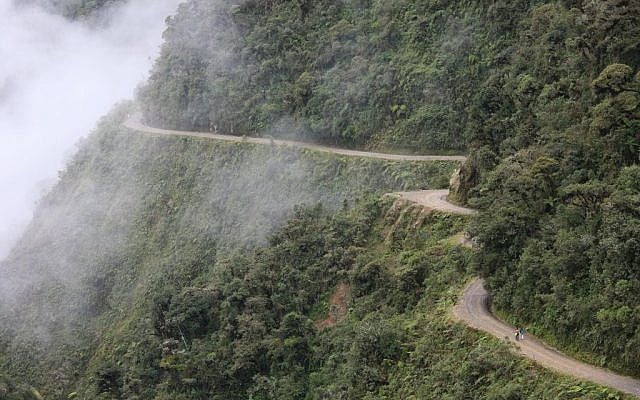
Death Road descends 11,800 feet through Bolivia’s Yungas region with sheer cliff drops of up to 2,000 feet. The narrow dirt track, frequent fog, and lack of guardrails contribute to its reputation as the world’s most dangerous road. Adverse weather conditions regularly trigger landslides and rock falls, while the road’s width often forces vehicles to navigate within inches of the precipice.
16. Yosemite National Park
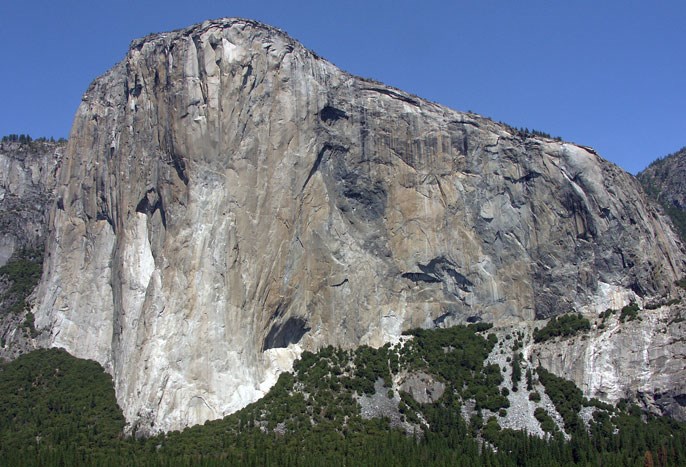
Yosemite National Park combines massive granite cliffs with powerful waterfalls and unpredictable wildlife encounters. The park records over 200 search and rescue operations annually, primarily from visitors attempting Half Dome’s cable section or venturing too close to fast-moving water. The steep hiking trails, rock climbing routes, and swift river currents create situations where even experienced outdoors people face serious risks.
15. El Caminito del Rey
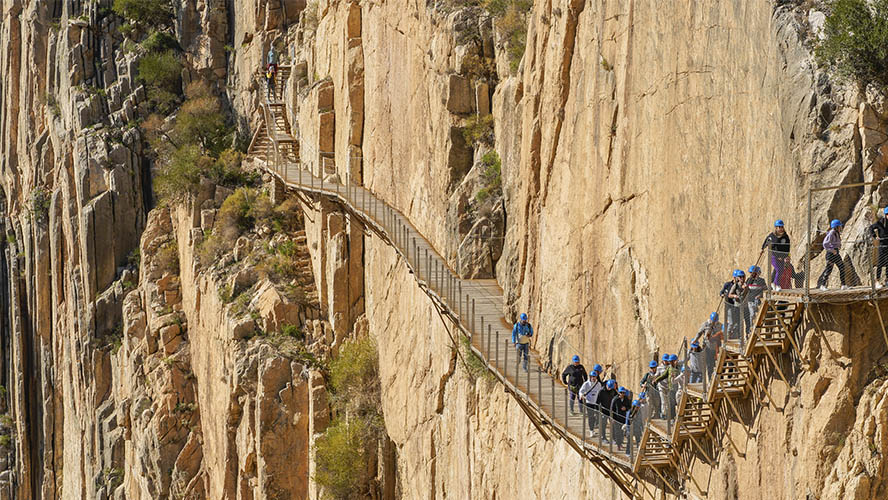
El Caminito del Rey pinned walkways along vertical cliff faces once earned it the title of world’s most dangerous pathway. Though renovated in 2015, this Spanish mountain trail still presents serious risks from high winds, falling rocks, and exposure to heights up to 330 feet. The original path’s remaining sections remind visitors of its deadly history.
14. Trift Bridge
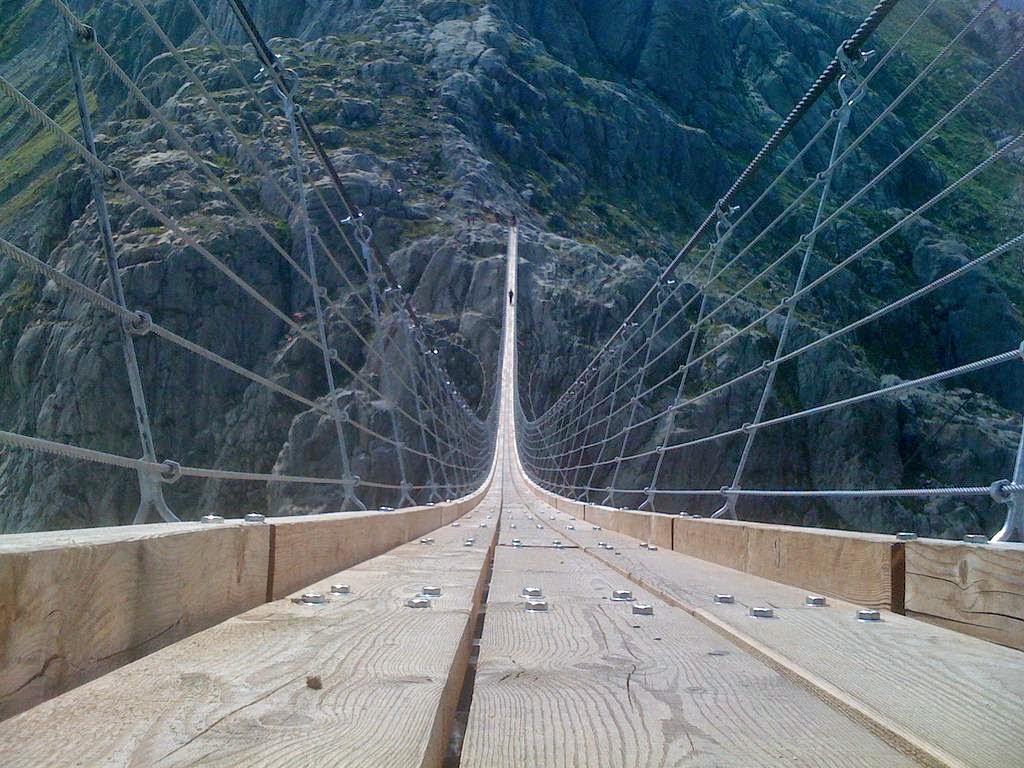
Trift Bridge spans 557 feet across a deep Alpine gorge at 328 feet high. Switzerland’s longest pedestrian suspension bridge sways considerably in strong winds, while its height and see-through mesh flooring challenge visitors with severe vertigo. The bridge’s remote location requires a cable car ride and hour-long hike to access, complicating emergency response times.
13. Mount Everest
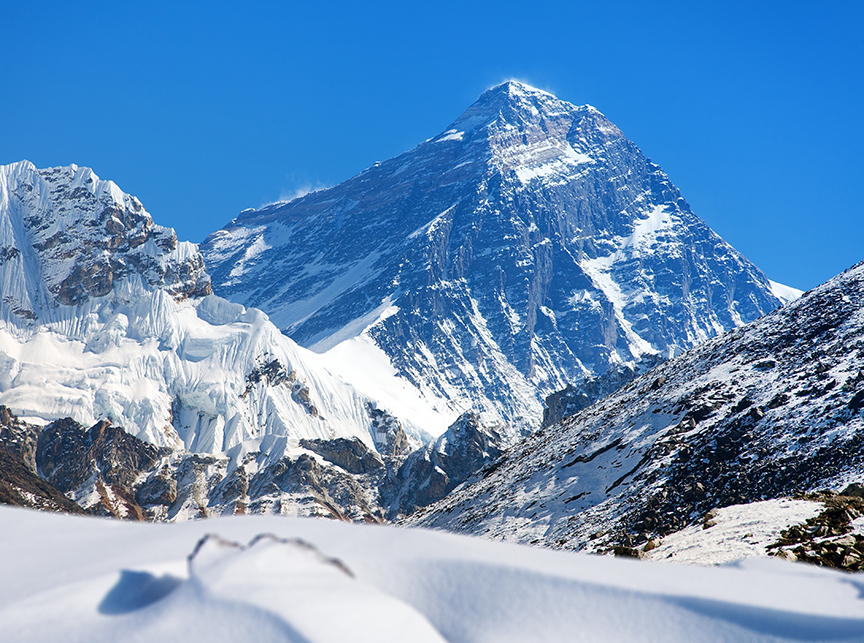
Mount Everest subjects climbers to lethal conditions including extreme cold, oxygen deprivation, and sudden storms. The death zone above 26,000 feet creates a situation where human bodies literally begin to die, while avalanches and hidden crevasses pose constant threats. Despite improved safety measures, the mountain claims multiple lives each climbing season from factors including altitude sickness, exhaustion, and exposure.
12. Kokoda and Black Cat Trails
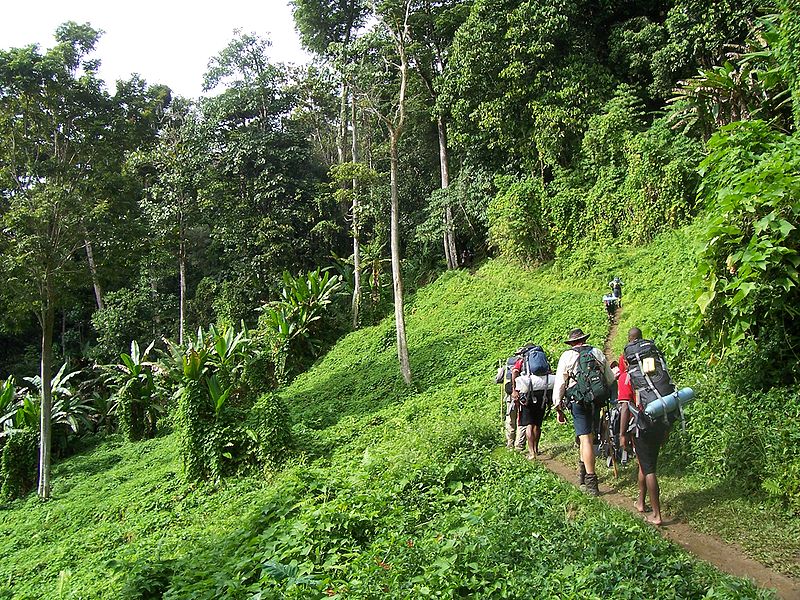
Kokoda and Black Cat Trails challenge hikers with extreme humidity, tropical diseases, and treacherous terrain. These Papua New Guinea tracks stretch through 60 miles of dense jungle, requiring visitors to navigate steep mountain passes and swift river crossings. The remote location, combined with limited medical facilities and the presence of venomous wildlife, makes these historic trails particularly hazardous.
11. Hawaiian Volcanoes National Park
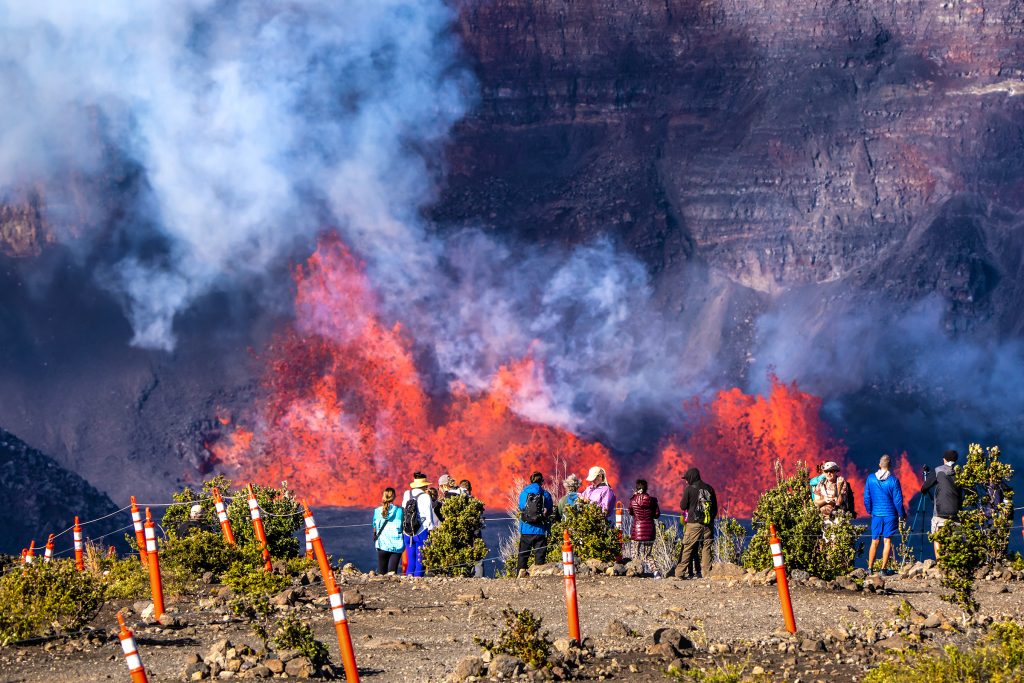
Hawaiian Volcanoes National Park exposes visitors to active lava flows, toxic volcanic gases, and unstable ground conditions. Kilauea’s ongoing eruptions create areas where thin crusts of cooled lava hide scalding temperatures underneath, while sulfur dioxide emissions pose severe respiratory risks. The park records numerous incidents yearly involving visitors who venture too close to volcanic activity or ignore warning signs about dangerous gas levels.
10. Mont Blanc
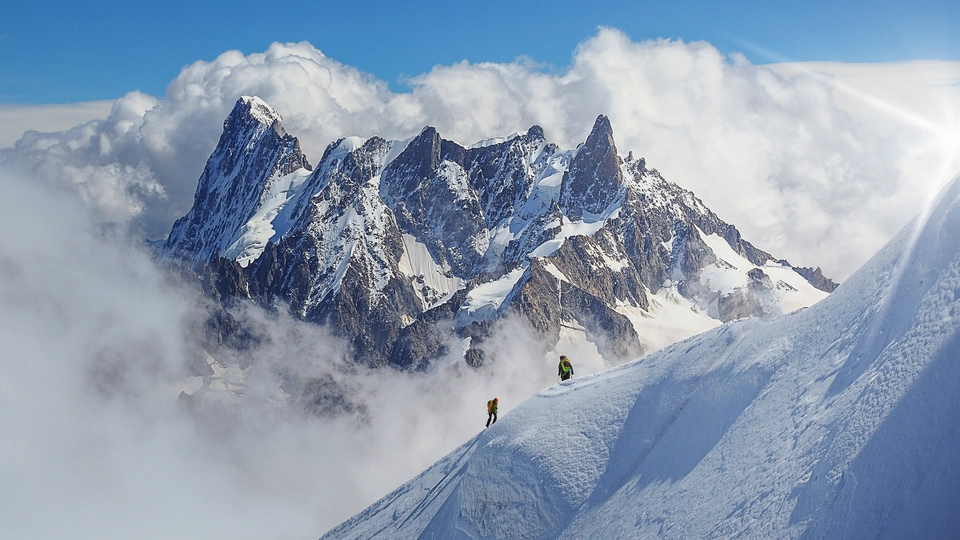
Mont Blanc claims more lives annually than any other European mountain. The combination of sudden weather changes, hidden crevasses, and high altitude conditions creates serious risks for the 20,000 climbers who attempt this 15,781-foot peak each year. The mountain’s accessibility often leads inexperienced climbers to underestimate its dangers.
9. Jacob’s Well
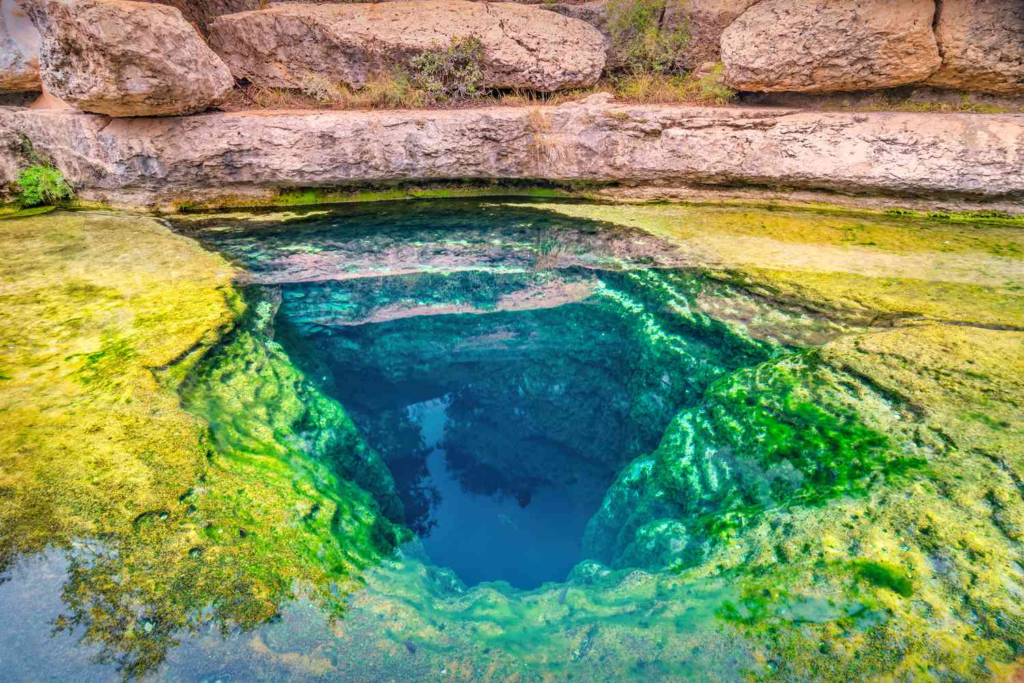
Jacob’s Well lures swimmers into a seemingly peaceful Texas spring that descends into a complex underwater cave system. The clear artesian spring plunges to depths of 120 feet, with narrow tunnels that have claimed the lives of several experienced cave divers. Strong currents and tight passages make this popular swimming hole particularly treacherous for those who venture beyond the initial chamber.
8. Heaven’s Gate
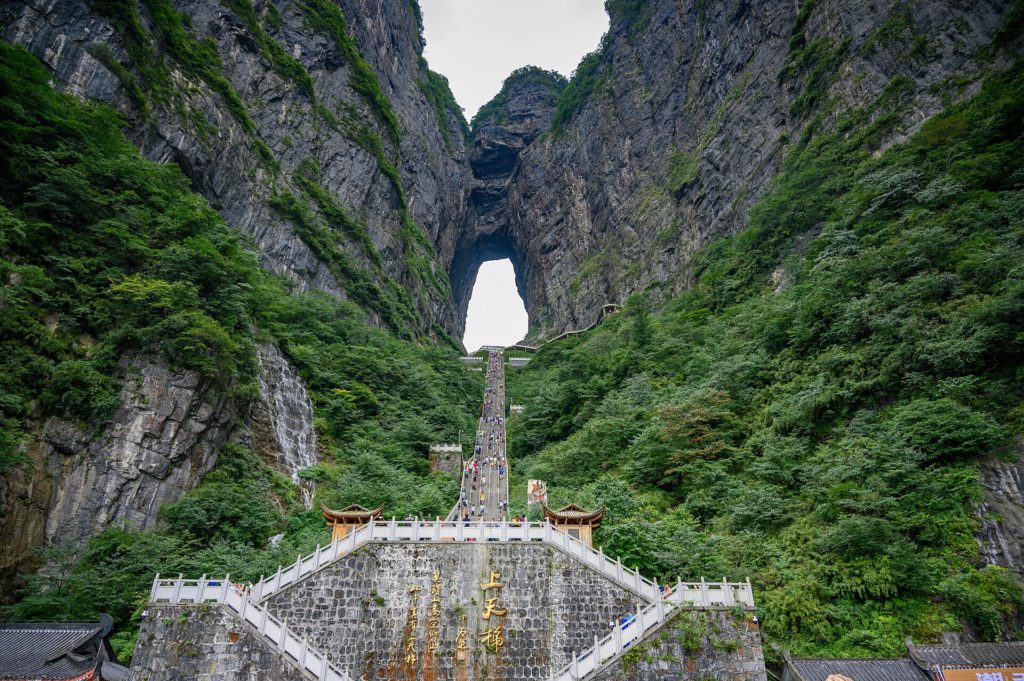
Heaven’s Gate Mountain Trail winds up China’s Tianmen Mountain, featuring 999 steps at a 45-degree angle. The steep ascent culminates in a natural arch 431 feet high, with minimal safety barriers protecting climbers from the sheer drops. Weather conditions often create dangerous visibility issues, while the physical demands of the climb challenge even experienced hikers.
7. The Danakil Desert
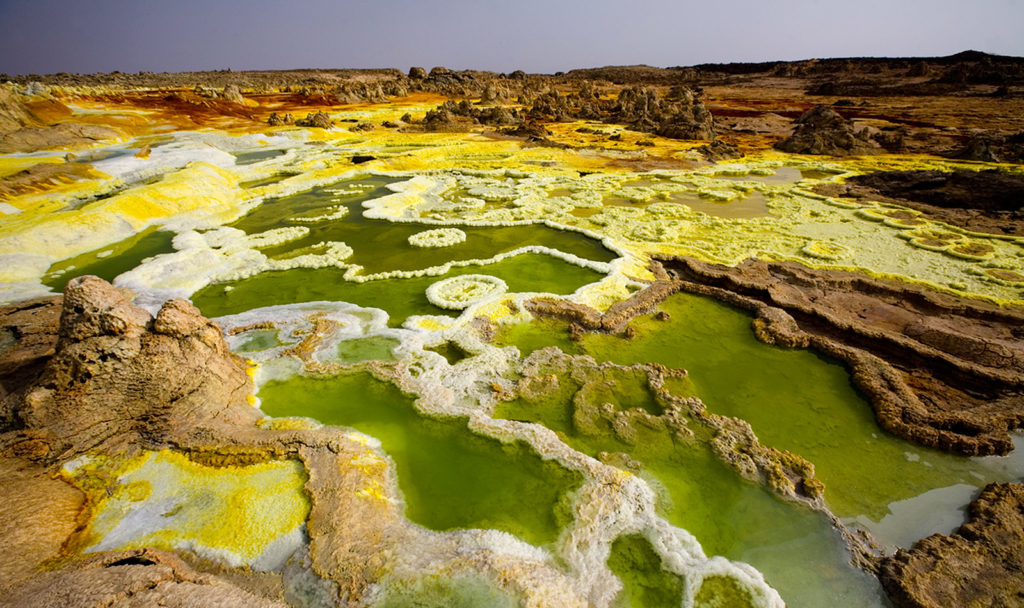
The Danakil Desert maintains average daily temperatures of 115°F (46°C), with toxic chlorine and sulfur gases emerging from its volcanic vents. This Ethiopian region combines extreme heat, poisonous fumes, and highly acidic hot springs to create Earth’s most inhospitable environment. Visitors require expert guides, specialized vehicles, and careful timing to survive this alien landscape.
6. Cave of Swallows
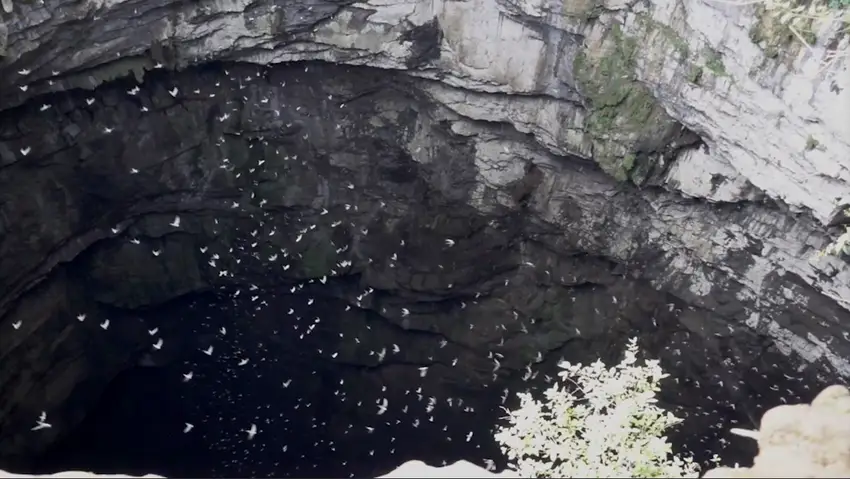
Cave of Swallows drops 1,200 feet straight down, making it Earth’s largest known cave shaft. The Mexican vertical cave requires advanced rappelling skills and specialized equipment for safe descent. Base jumpers who explore this natural wonder face additional risks from the cave’s unpredictable air currents and the massive flock of swifts that spiral out each morning.
5. Snake Island
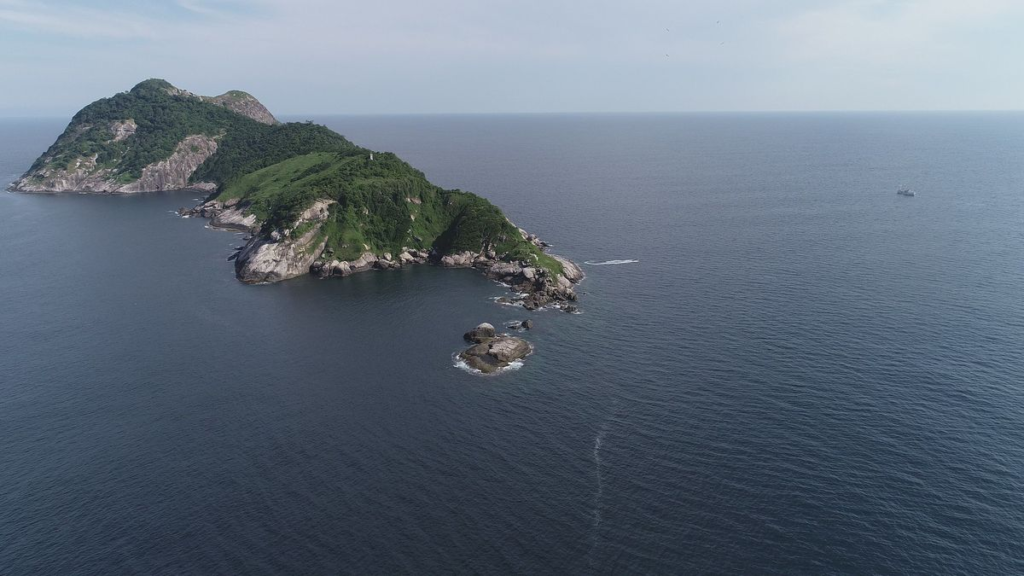
Snake Island (Ilha da Queimada Grande) harbors the world’s highest concentration of venomous snakes, with researchers estimating one golden lancehead viper per square meter. The Brazilian government strictly prohibits public access to this island, located 33 kilometers off São Paulo’s coast. The golden lancehead’s venom acts quickly enough to melt human flesh, and the island contains anywhere from 2,000 to 4,000 specimens.
4. Hawksbill Crag
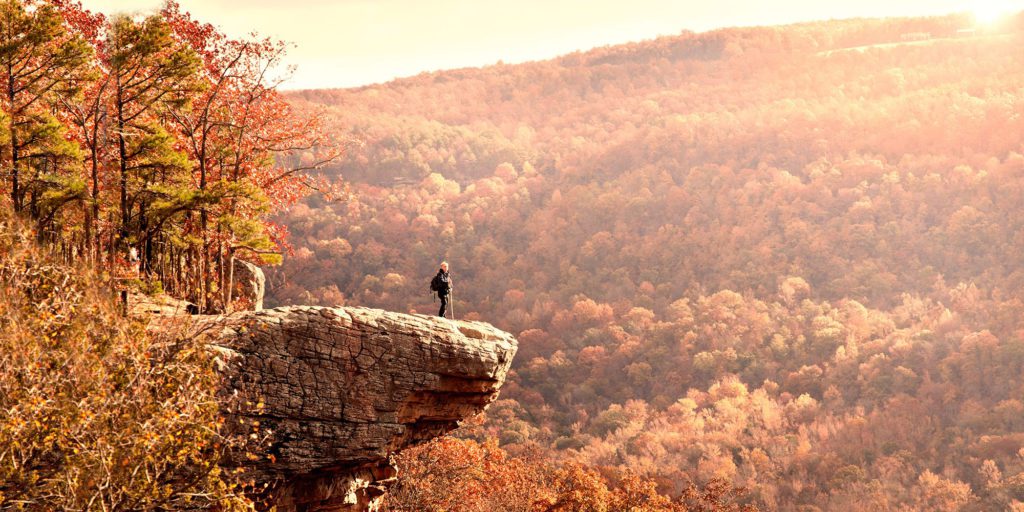
Hawksbill Crag rises 150 feet above Arkansas’ Ozark Forest, creating one of America’s most photographed yet precarious viewpoints. The rock formation’s exposed edges lack safety barriers, while frequent high winds and unstable footing contribute to dangerous conditions. Visitors regularly underestimate the cliff’s height and the crumbling nature of its sandstone surface, especially during wet weather conditions.
3. Precipice Trail
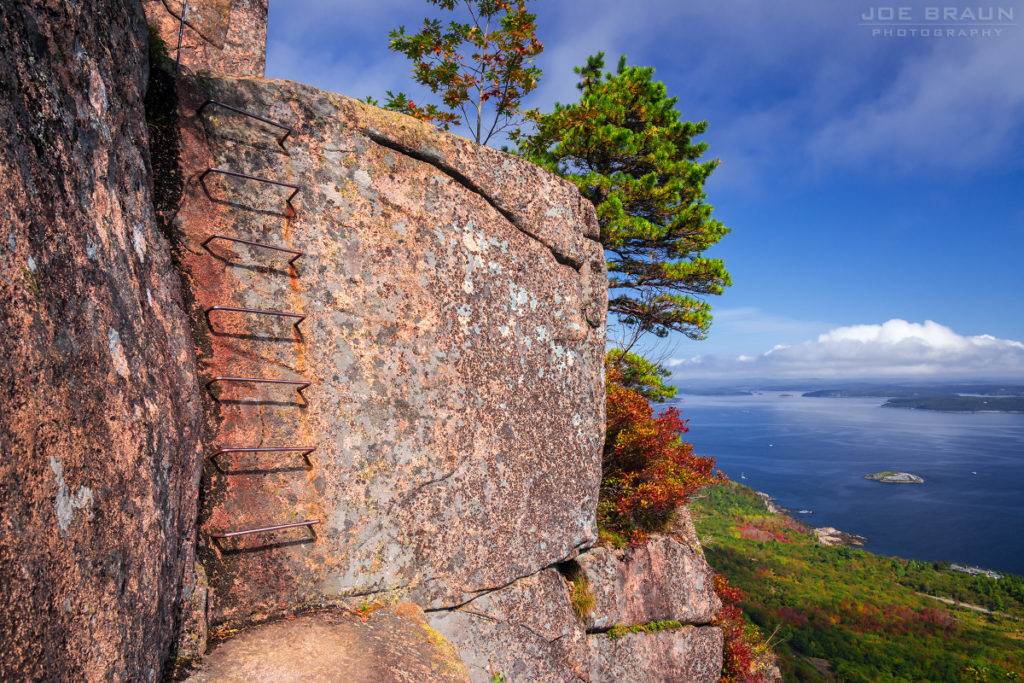
Precipice Trail in Acadia National Park demands technical climbing skills from its visitors. This 0.9-mile trail includes iron rungs, ladders, and narrow ledges along exposed cliff faces with 1,000-foot drops. Hikers face serious risks from loose rocks, sudden fog banks, and slippery conditions after rain. The park service closes the trail during peregrine falcon nesting season, adding natural barriers to an already challenging climb.
2. The Elephant Kingdom in Chonburi
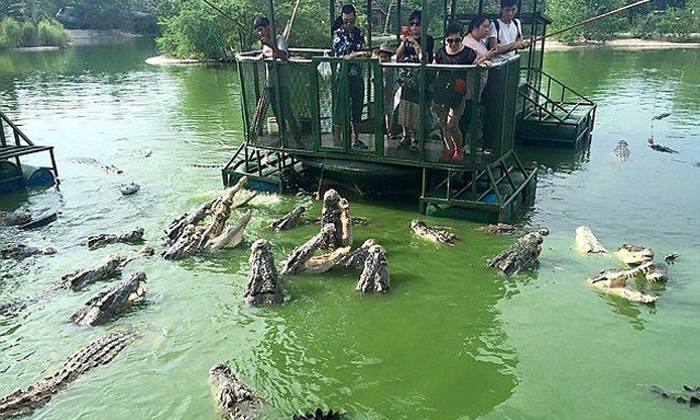
The Elephant Kingdom in Chonburi presents visitors with unique risks due to close proximity to wild crocodiles. This Thai tourist attraction features elevated walkways where visitors feed the reptiles, with over 100 adult saltwater crocodiles inhabiting the waters below. The combination of slippery walkways, aggressive feeding behaviors, and the sheer number of apex predators creates a potentially hazardous environment for tourists who ignore safety protocols or lean too far over the railings.
1. Grand Canyon National Park
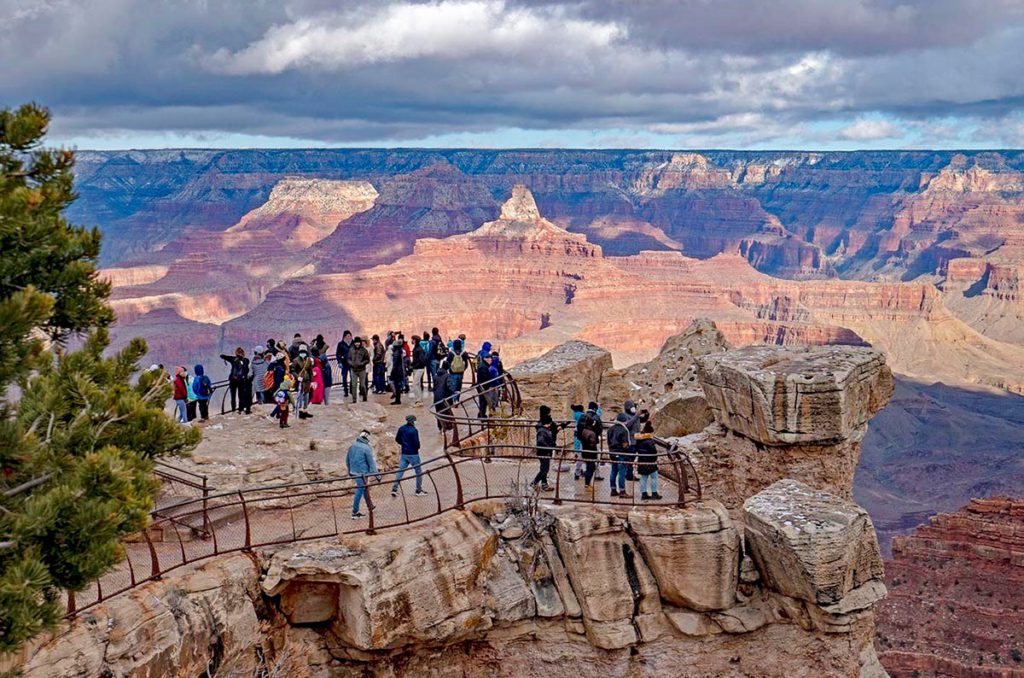
Grand Canyon National Park combines stunning natural beauty with serious environmental hazards. The combination of extreme desert temperatures reaching 120°F (49°C) in summer and treacherous cliff edges creates dangerous conditions for the park’s 6 million annual visitors. Park rangers respond to approximately 250 rescue operations yearly, with most incidents involving unprepared hikers suffering from heat exhaustion and dehydration. The steep trails, sudden weather changes, and misleading distances make this natural wonder one of America’s most challenging national parks to explore safely.





















